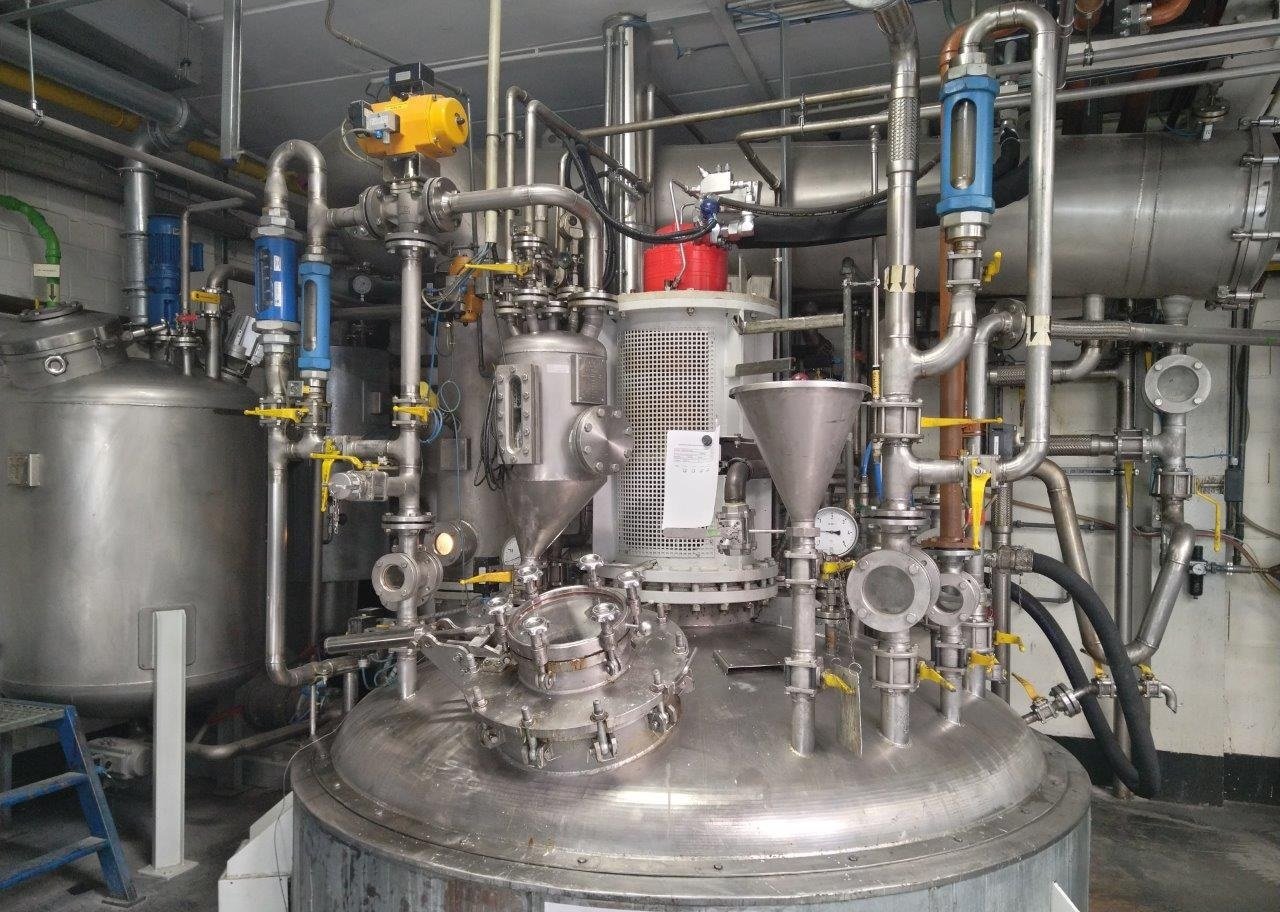An innovative hydraulics system heralded a step-change in energy reduction efforts at this Stahl site
Stahl is committed to reducing its direct environmental impact – a goal we set for ourselves in our ESG Roadmap to 2030. A large part of this impact comes from the electricity used at our sites. In Leinfelden-Echterdingen, Germany, our enterprising team cut the site’s power consumption by 4,000 kWh per day by replacing the ageing hydraulics system.
Leinfelden & hydraulics
Our Leinfelden site is located in south-west Germany, close to Stuttgart, and is home to Stahl’s centre of excellence for high-performance leather coatings. The plant specialises in the production of polyurethane dispersions (PUDs) that make leather coatings more durable and manufactures products for the Performance Coatings Division.

And where do the hydraulics come in? The products are manufactured in reactors and mixing vessels which require power for stirring. At Leinfelden, the agitators are driven by hydraulic drives, which are moved by the pressure of the hydraulic pumps.
For a long time, the hydraulic drives were powered by a central pumping system. This central pumping system was producing a constant pressure with no adjustment for the site’s needs. As a result, the pumps were running even when demand was low, making the old hydraulic system inefficient.
A system designed for seven vessels ended up supporting more than twenty, so it was time for a change. We saw an opportunity to switch to a decentralised hydraulic system that would allow each pump to be controlled individually, saving energy and improving product quality.
Installing the new system
Replacing such a critical part of the Leinfelden site’s infrastructure required the expertise of several Stahl teams, as well as collaboration with external suppliers. But despite the complexity of the project, it was all done without interrupting production. Here’s how we did it:
- Detailed planning for the hydraulics replacement project began in 2021.
- A collaborative approach was evident from the start, with Stahl colleagues from across various departments – engineering, planning, production and maintenance – involved in the preparations.
- External partners worked closely with our internal team on piping, electrical installation and special component design.
The result? Talented engineers from Stahl and our partners installed the new system with far fewer problems than expected. What’s more, the plant never had to be shut down for the installation works, which meant uninterrupted service for our customers.
To install the new system, the team took one reactor out of service at a time. At the start of the work, it took two weeks to adapt the vessel to the new system and bring the reactor back online. However, as we became more proficient, the changeover time dropped to just one week and then to just three days. A great result!
New hydraulics, less energy
These energy savings are a win-win: not only do they deliver significant cost savings, but they also fit perfectly with Stahl’s ESG Roadmap to 2030. The energy savings have been so great that the site’s electricity consumption has fallen by an average of 15%, resulting from energy savings of over 60% in the hydraulic system.
Stahl aims to do well by doing good, which means continuously reducing its direct environmental impact between now and 2030. It’s rewarding to see our hard work contribute to this goal in such a measurable and impactful way.
With the Leinfelden plant using far less electricity and manufacturing products of consistently high quality, the hydraulics replacement project has been a real success – without losing a single day of production! It’s a powerful example of how the hard work, intelligence and diligence of all our colleagues is driving real progress in sustainability. We can’t wait to see what we can achieve next.


